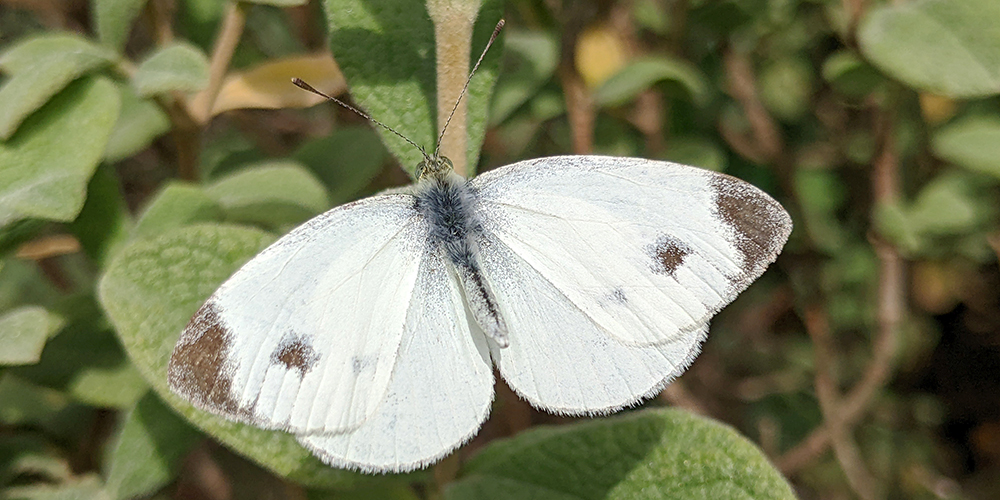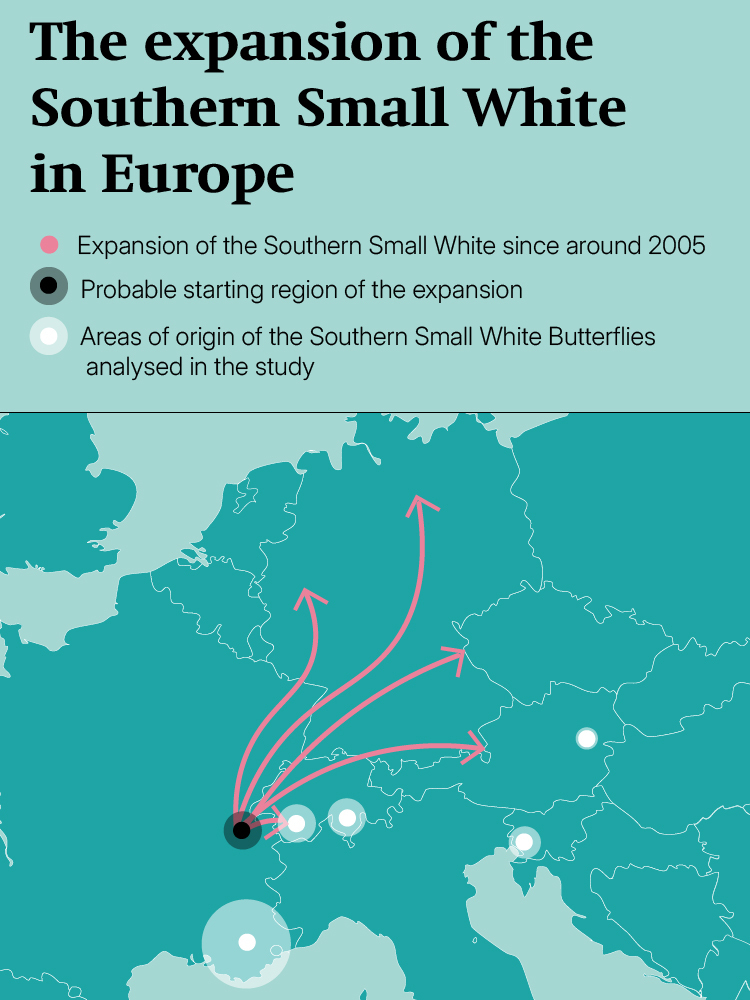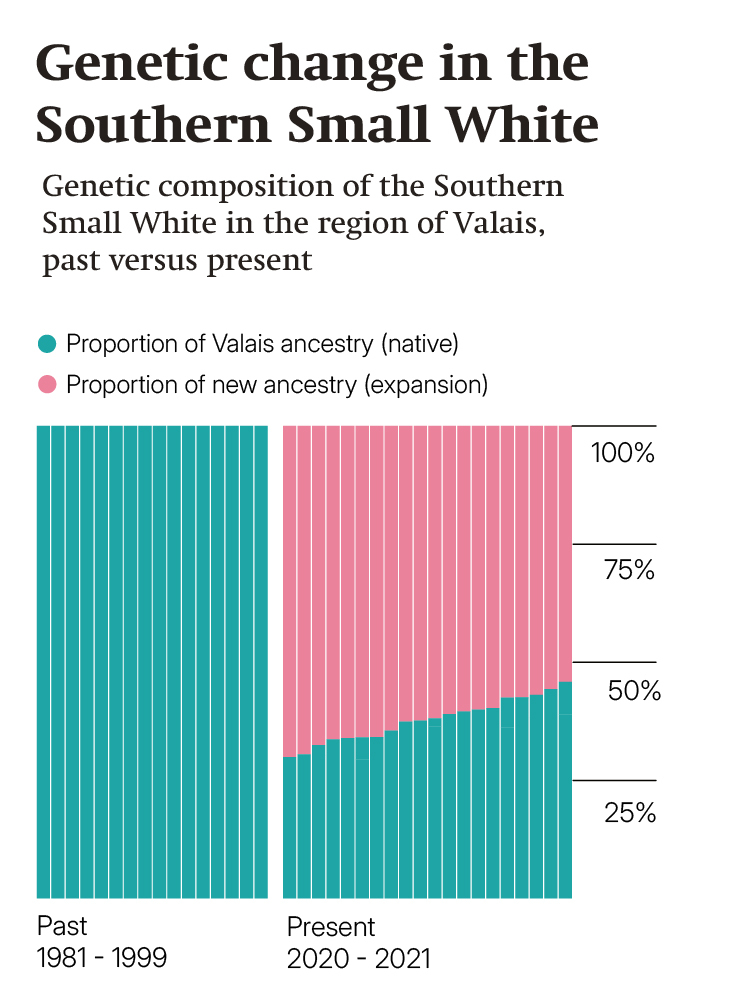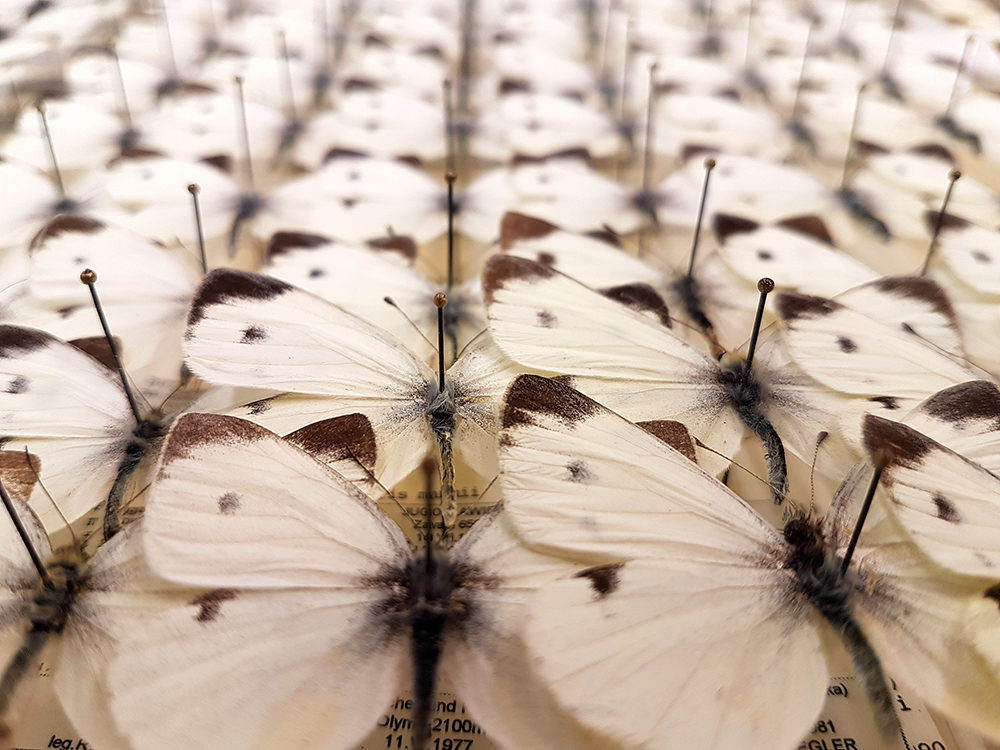How a butterfly invasion minimizes genetic diversity
Until a few years ago, the butterfly known as the southern small white could barely be found north of the Alps. That was before a Europe-wide invasion that brought a huge increase in the insect’s distribution – at the same time as a rapid decrease in genetic diversity within the species.
25 September 2024 | Catherine Weyer
It took a while for zoologist Daniel Berner to notice that a butterfly species that wasn’t local to his area had become established in his garden. Then, suddenly, he saw it everywhere: Pieris mannii – also known as the southern small white – with its wingspan of around four centimeters and white wings adorned with large black spots.
Indeed, until a few years ago, only a few small, localized populations of this principally Mediterranean species existed in Switzerland, in Valais and Ticino. But at some point in around 2005, the butterfly began its journey north and east – and it has now been identified at the North Sea and in the Czech Republic.
Comparison with museum specimens
With its expansion, however, came a significant loss of genetic diversity. “We found that, as it invaded, the southern small white standardized local populations of its own species,” says Dr. Daniel Berner of the University of Basel. Together with researchers from the University of Greifswald and the Senckenberg German Entomological Institute, Berner has published a study in Current Biology investigating how the butterfly’s expansion has impacted diversity within its own species.
The researchers compared the genetic make-up of freshly caught butterflies with that of significantly older museum specimens – in other words, specimens that had been caught and preserved before the invasion began. In doing so, they demonstrated that the genetic composition of the researched local populations has changed considerably. Indeed, a large part of the original genetic make-up has now been replaced with that of the expanding population.
“If we hadn’t made the comparison with the museum specimens, we wouldn’t have spotted this genetic change,” says Berner. For their analyses, the researchers were able to sequence butterflies from the collection of the Natural History Museum of Bern and therefore to characterize the insects genetically. They were very lucky that, over the decades, the lepidopterist (butterfly researcher) Heiner Ziegler had amassed an extensive collection of specimens of none other than the southern small white – and that they could use this collection in their research.
Favorite plants in gardens
Urbanization is helping the butterfly to spread rapidly. In fact, the southern small white doesn’t like to fly long distances. Instead, it spends its lifespan of approximately three weeks fluttering around within a modest radius of its birthplace, in which the caterpillars’ food plants also thrive – namely arugula and, above all, candytuft. The latter is particularly widespread in gardens within settled areas. Accordingly, the increasing expansion of the built environment has given the southern small white the opportunity to spread far and wide.
Moreover, there are five or six generations of southern small white per year, rather than just one. “This species can therefore quickly build up large populations in a newly settled area, favoring the settlement of new land over large distances,” Berner explains. It is very likely, he says, that the butterfly will expand further – provided that its food plants are available. “In any case, butterfly researchers in England are just waiting to spot the first one.”
Expansion and genetic mixing – loss or gain?
From a conservation perspective, the expansion of the southern small white is a double-edged sword. As the species uses largely human-designed habitats in the newly settled area, it is not expected to compete with indigenous butterflies. Moreover, expansion means that this butterfly species is now much more numerous overall, which tends to reduce its risk of dying out.
However, these positives are offset by the disappearance of genetic diversity that had built up over the course of millennia: “Although it’s the fate of living things that some local groups can die out, what’s special about the situation facing the southern small white is that the loss of original population diversity accompanies expansion of the built environment – and is therefore caused by humans.”
As yet, the researchers don’t know why the southern small white in particular has embarked on major expansion or where exactly this process began. “Presumably, nothing fundamentally new has happened on the side of the butterfly. So far, we haven’t found signs of major genetic change in the expansive population, and climate change doesn’t appear to play a key role in the situation,” says Berner. The researchers want to continue looking into these questions, but they already have their suspicions as to the starting point: the invasion may have begun in eastern France.
Original publication
Lucas A. Blattner, Dustin Kulanek, Simona Ruffener, Heiner Ziegler, Hans-Peter Wymann, Martin Wiemers, Peter Michalik, Daniel Berner
Urbanization-associated range expansion genetically homogenizes a butterfly species
Current Biology (2024), doi: 10.1016/j.cub.2024.09.006






